Want to lose weight and keep it off?
You’re in the right place.
I’ve put together the most comprehensive list of ways to lose weight… without any “miracle” potions, crazy diets or other scams you usually come across.
These are all credible and scientifically accurate recommendations that you can implement right now.
But before you go any further, keep this in mind…
All diets work.
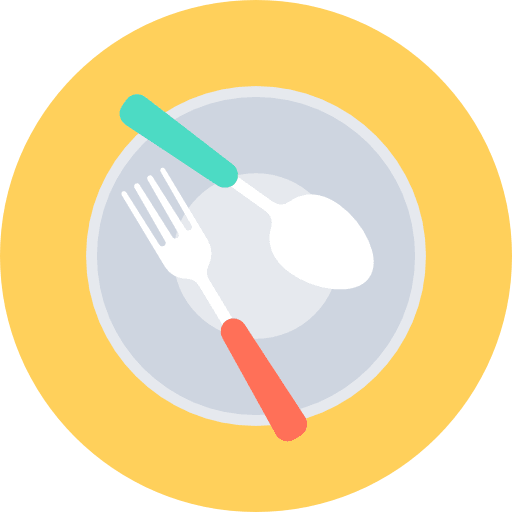
Although they can take opposing approaches, all diets are designed to make you eat fewer calories by restricting certain food groups.
Whether the restriction is on processed foods, carbs, fats, animal products or even skipping meals, they all work by limiting the amount of calories you consume (1).
With that in mind, the following weight loss tips and strategies are all proven ways to eat fewer calories or burn additional calories with minimal effort on your part. It must be the most complete and accurate list available online…
If you already think you’ve tried it all, go through this list. I guarantee you’ll discover golden ideas you wish you’d thought of years ago.
Warning: this list is huge.
1. Stop Eating So Much Coconut Oil

Coconut oil has become very popular in the natural health community.
However, those who want to lose weight should not be adding more into their diet.
Coconut oil is 100% fat and 1 gram of fat contains 9 calories. By comparison, 1 gram of carbohydrate or protein contains only 4 calories per gram.
This means coconut oil is bursting with calories.
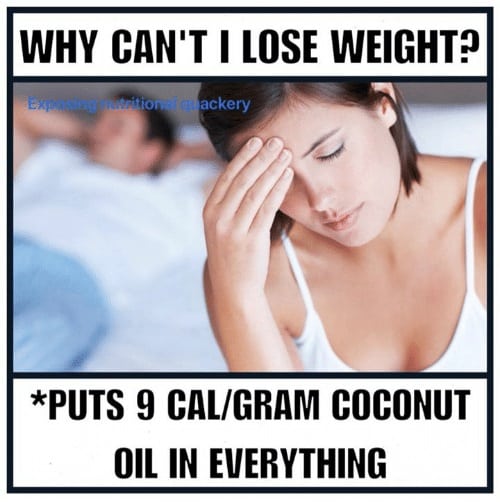
For example, just one tablespoon (13.6 grams) of coconut oil is 117 calories. That’s equal to the calories in three oreo cookies, or half a Mars bar (2).
The benefits of coconut oil have also been grossly exaggerated, so it’s best just to save it for delicious Asian dishes.
2. Don’t Let Your Kids Boss You Around

Many use their kids as an excuse for having junk food in the house.
Yet in reality, you are in control of purchasing decisions, not them.
And if you believe the foods your children want are not healthy options for you, why would they be for your children?
Fat loss is a lot easier if everyone is eating healthy at home, not just you.
Here are some options if you have fussy kids.
3. Skip Breakfast If You Don’t Love It

Today’s official nutrition guidelines recommend we eat breakfast.
But new research shows it’s not “the most important meal of the day.” At least, not for grown adults.
In this large study comparing recommendations to eat or skip breakfast in 309 overweight or obese subjects, there was no difference in weight between groups after 4 months (3).
It simply didn’t matter whether people ate or skipped breakfast.
It was always thought that skipping breakfast caused people to be hungrier and eat more calories later in the day. However, turns out this isn’t enough to overcompensate for the breakfast that was skipped.
This seems logical, because you are effectively removing an entire meal from your diet each day.
Basically if you’re hungry in the morning, eat breakfast. If you aren’t, don’t.
4. Learn to Enjoy Black Coffee Instead of Milk Coffee

Many people don’t even consider a milk coffee to be a snack, let alone a high-calorie snack.
But a 12 oz (350 ml) whole milk coffee, such as a latte or cappuccino, contains 165 calories (4).
That’s almost the same as eating a glazed donut from Krispy Kreme, or two large boiled eggs (5).
If you like coffee and you need to lose weigh it’s best to stick to plain, black coffee.
5. Don’t Add Sugar In Your Coffee
Whole milk in your coffee is one thing, but adding loads of sugar takes it to a whole new level.
High-calorie coffee drinks are actually no better than soft drinks. They’re loaded with empty calories that can equal a whole meal or more.
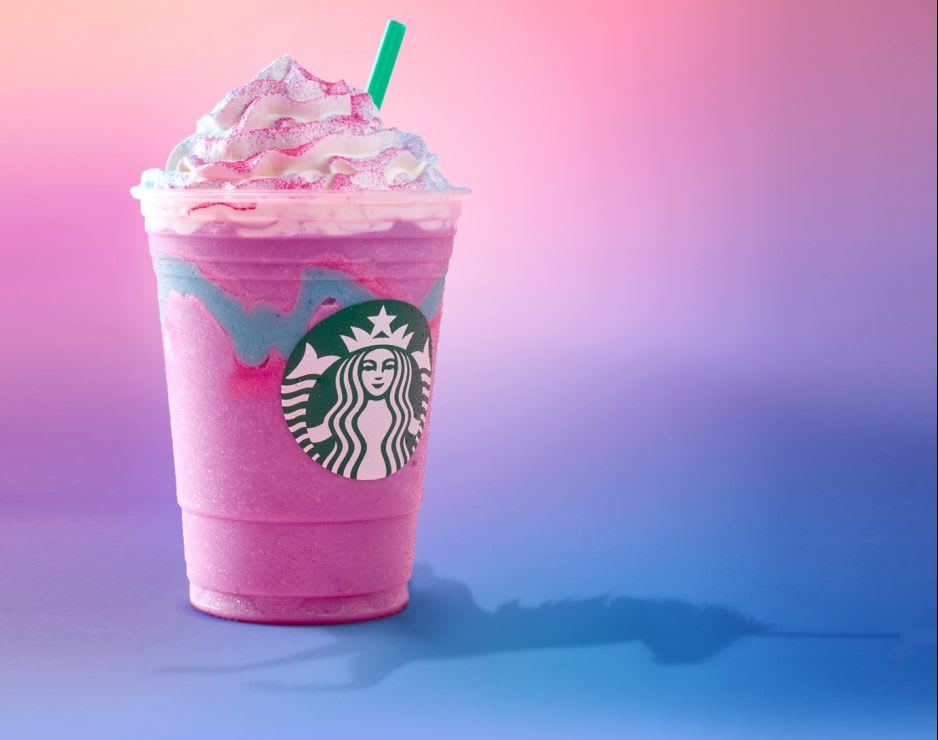
Source: starbucks.com
Starbucks’ 16 oz Unicorn Frappuccino had a whopping 410 calories.
Fair enough if you wanted to try that with a friend (I did), but flavoured coffee should not be a regular part of your diet.
6. Eat Healthy On The Weekend Too
Many people eat healthy during the week only to “cheat” or splurge on the weekend with junk food, restaurant meals and alcohol.
Unfortunately, if you are trying to lose weight then this eating pattern will not work.
The extra calories you consume on the weekend will cancel out any deficit you create during the week. Dr. Spencer illustrates this nicely:
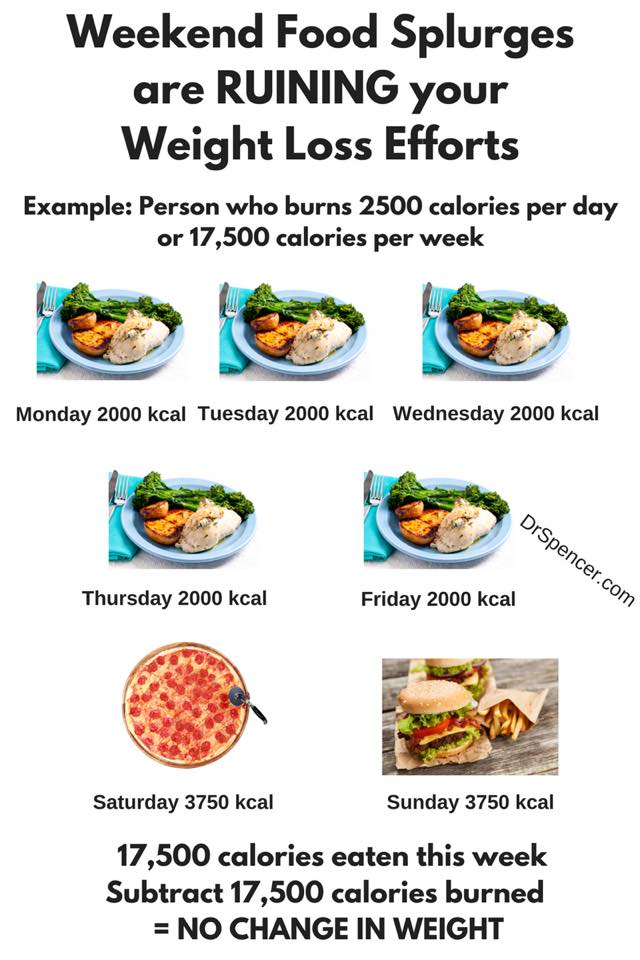
Sustainable weight loss is about lifestyle change, which includes the majority of weekends too.
7. Don’t Portion Equally With Your Partner
Many couples fill their plates with the same amount of food.
Generally speaking, over time this will cause one person to gain weight. Calorie requirements vary widely depending on your current weight and how physically active you are.
For example, an active 200 lb (90kg) male requires about 2800 calories to maintain his weight. An active 155 lb (70kg) woman requires about 2170 calories. Exceeding those needs will cause fat gain.
For perspective, that 600 calorie difference in requirements is equivalent to a small McDonalds Happy Meal with Coke.
To accurately predict your daily calorie requirements I recommend using Alan Aragon’s equation, which is accurate to within 5% of the longer formulas:
- In pounds: Total Energy Expenditure = Target bodyweight in pounds x (8-10 or 9-11 + average total weekly training hours).
- In kilograms: Total Energy Expenditure = Target bodyweight in kilograms x ((8-10 or 9-11 + average total weekly training hours) * 2.2).
8. Stop Eating So Much Butter
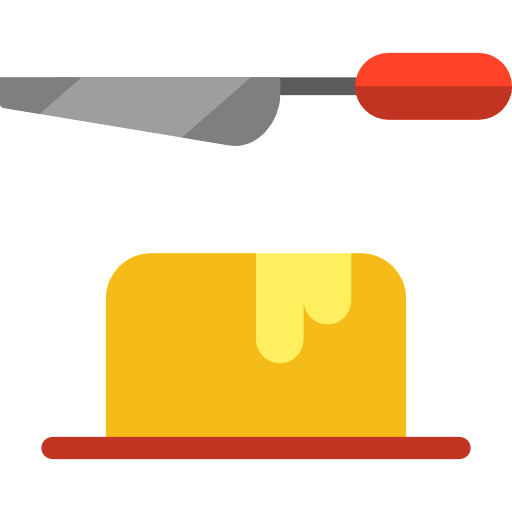
I love butter.
It can turn just about any plain dish into a culinary masterpiece.
But it’s extremely high in calories, which means it’s not a good idea to increase your consumption.
Not only that, but large quantities of butter appear to be much worse for heart health markers than equal amounts of cheese or cream (6, 7).
For this reason (among others), the craze to “bulletproof” your diet with butter is dumb.
9. Go Easy on Peanut Butter, Margarine and Other Spreads
It’s so easy to slather on excessive amounts of a spread like peanut butter, Nutella or margarine.
Trying to eyeball it can be incredibly deceiving.
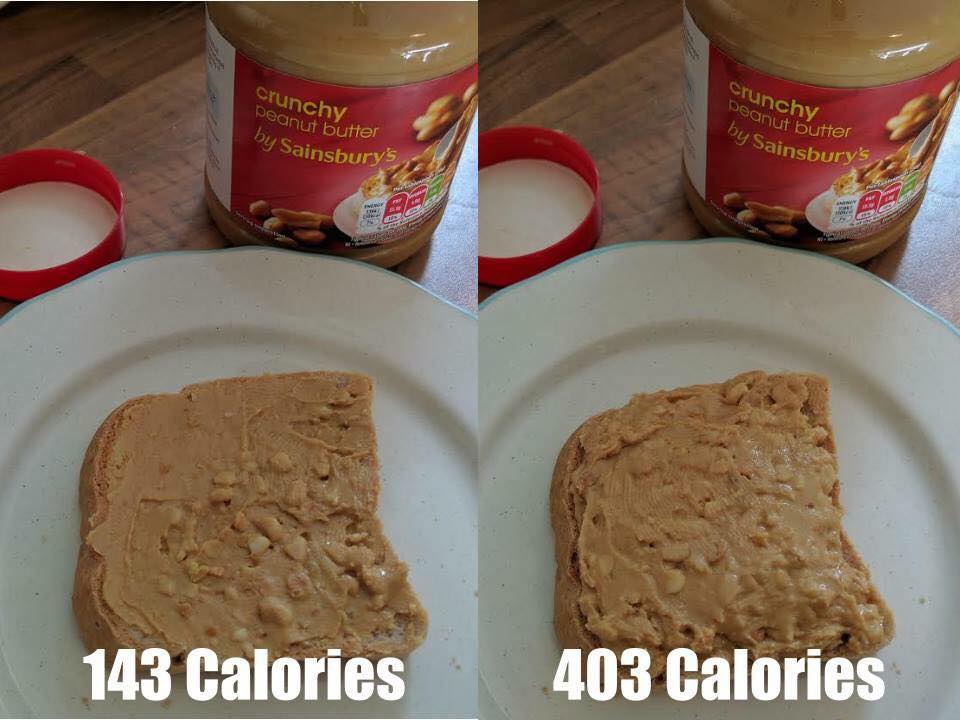
Source: Ben Carpenter
Use a tablespoon to first measure out how much spread you’ll have. Getting this right could be huge for your weight loss efforts.
10. Embrace “Hara Hachi Bu”
Hara hachi bu is a traditional Japanese practice that roughly translates as “eat until you are 80% full.”
This is in stark contrast with our typical Western eating pattern, which is to eat until your sides are splitting.
This form of self-imposed calorie restriction seems to work exceptionally well for those who practice it, such as residents of the Japanese island of Okinawa.
Older Okinawans have a body mass index (BMI) of 18 to 22, compared with an average of 27 for older Americans. Above 25 is considered overweight (8, 9).
It’s no wonder Okinawa has the most centenarians (people who live over the age of 100) in the world.
Simply altering expectations of how full you should feel after a meal can be a powerful mindset shift for those who want to lose weight.
11. Don’t Eat Six Small Meals Per Day
Eating frequent small meals through the day was always thought to be good for weight loss.
The idea was that eating often kept your metabolism high so you would burn more energy, encouraging weight loss.
But it turns out that during digestion, the total amount of food eaten actually determines the amount of energy used, rather than how often you eat (10, 11).
So eating three meals of 800 calories will burn the same amount of calories as eating six meals of 400 calories. There is literally no difference.
Eating regularly throughout the day works for some, but if that’s not you, stop.
12. Go Paleo
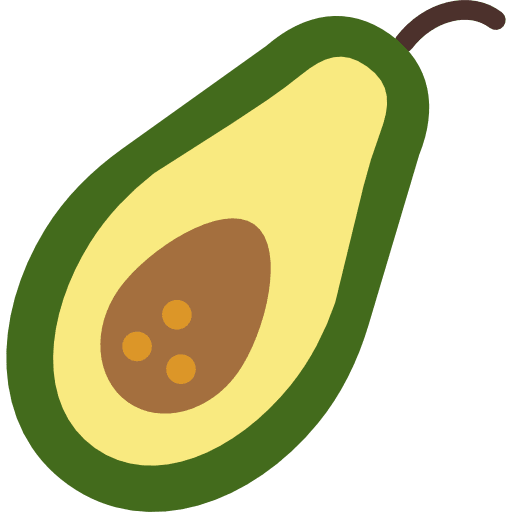
Because there’s basically nothing fun you can eat, so you will lose weight.
In all seriousness, it can work because a Paleo eating pattern forces you to cut out most high calorie junk foods, which means you’ll eat fewer calories.
As you might expect, research shows it can be an effective weight loss diet (12, 13).
The question is how long can you maintain a restrictive diet that cuts out all bread, pasta and any sweet treats forever?
13. Go Vegan
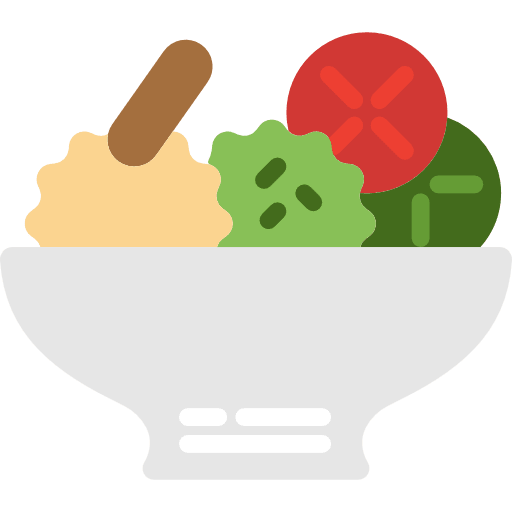
Again, because there’s basically nothing fun you can eat!
In actual fact animal products are typically far higher in calories compared to plant foods. Especially cheese and processed meat like sausages and bacon.
Cutting out these from your diet will result in fewer calories consumed and weight loss.
The data consistently shows that vegetarians and vegans are thinner than the average person (14, 15).
14. Avoid Frozen Pre-Packaged Snacks Like Chicken Tenders
Chicken tenders, nuggets, fish fingers, tater tots (potato gems) and other frozen snacks are a popular treat.
Many even use them as a quick and convenient main meal dish, without realizing just how fattening they are.
Anything that is crumbed or battered and pre-packaged has been covered with vegetable oil. In fact, vegetable oil will be one of the main ingredients.
This basically doubles the calorie content when compared to a non pre-packaged version of the same food.
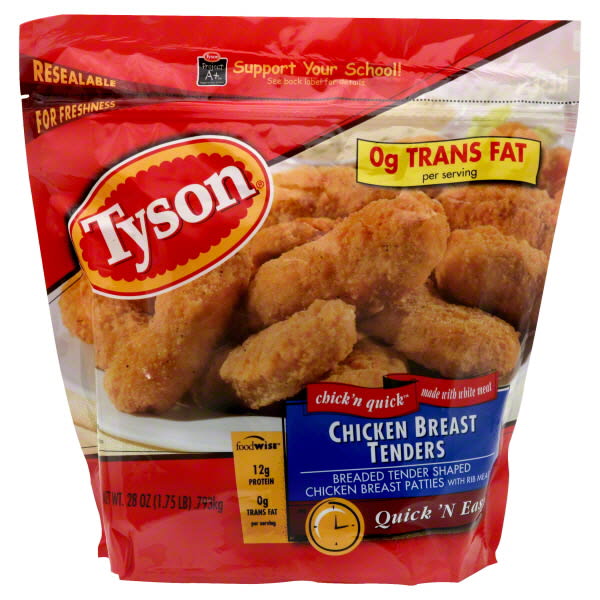
Source: forthemommas.com
For example, one serving (four pieces) of Tyson brand frozen chicken tenders is 210 calories, or 1263 calories per 100 grams (16).
By comparison, an equal amount of plain chicken breast that you roast in the oven is only 110 calories. That’s half the calories for essentially the same thing, chicken breast.
You will find it really difficult to lose weight if you continue to eat frozen pre-packaged foods.
15. Set Realistic Weight Goals

Goals are important to get you started, but unrealistic weight loss goals will often work against you.
This is shown in data from several weight loss center programs.
It turns out those expected to lose the most weight are in fact the most likely to drop out of a program (17).
This makes sense because if you set the bar way too high, it can be extremely disheartening to not even go close. That can lead to yo-yo dieting and a kind of stop-start inconsistency that doesn’t make progress long-term.
A good realistic and modest goal is a 10% drop in weight over one year.
Just like weight gain, weight loss is a marathon, not a sprint.
16. Go Easy In The Holidays
Research shows our waistlines expand most during the holiday seasons.
It’s not much though, with the average person gaining only 1 lb (0.5 kg) between November and January.
However, the problem is we don’t lose that extra weight later in the year. The weight gain just builds on itself year on year until one day you actually notice it (18, 19).
This certainly doesn’t mean you should skip your favorite turkey dish or avoid your work Christmas parties. Food is so much more than just nutrients and calories.
But you need to start thinking about how to make better decisions when food is abundant, or what extra steps you can take to expend those additional calories.
17. Buy New Activewear
What we wear actually influences our thoughts and behavior, especially at the gym.
The experience that certain clothes can provide has been nicknamed “enclothed cognition” by researchers (20).
It makes sense that new fitness wear encourages us to be more active. At least, for a short while.
This is a fun parody of that concept:
18. Stop Eating Bacon and Sausages

Processed red meat like bacon and sausages are terrible for you, especially if you want to lose weight.
They are low in protein and tremendously high in fat and calories. Plus the cheapest varieties are typically only 30-50% meat, which is saying something.
I’m not a hardcore vegan enthusiast (see tip #13), but a high consumption of processed red meat (added nitrates) is linked to an increased risk of several forms of cancer if your lifestyle is unhealthy.
Alongside other cured meats, these are treats you should eat infrequently and in small quantities.
19. Stop Eating Pizza
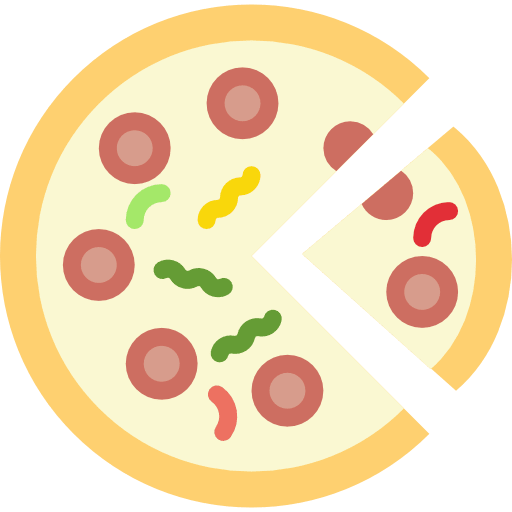
Pizza is one of the most calorie-dense junk foods available.
Just two slices of a plain cheese pizza is 550 calories on average, equivalent to eating almost six bananas or seven hard-boiled eggs (21).
And that’s just for the average, plain pizza.
If you eat an entire 14 inch cheese pizza (which is not uncommon), you’ve consumed almost 2400 calories in one meal. Government guidelines say the average female requires only 2000 calories per day.
Pizza should be something you eat at your Christmas party, that’s it.
20. Stop Eating White Bread
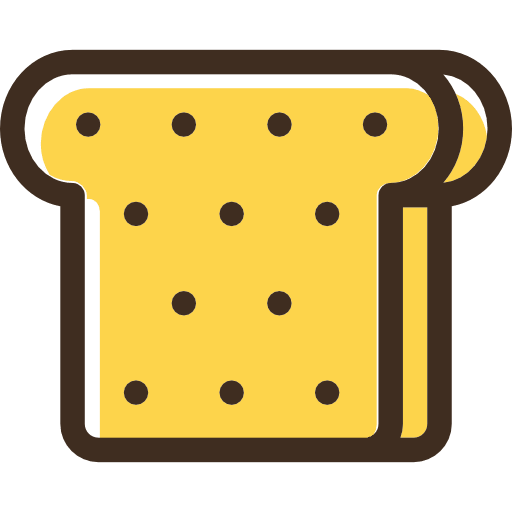
White bread has no place in a weight loss diet.
It’s highly refined to the point where almost zero fiber remains, which means it does not make you feel full.
This also makes it high on the glycemic index and can spike your blood sugar levels sharply, as though you were eating sugar.
Combined with how soft and easy it is to eat, white bread can easily become a source of unfulfilling calories.
This study of 9,267 people found that those eating two slices (120 grams) of white bread per day were linked to a 40% greater risk of weight gain and obesity (22).
Fortunately, there are many healthy alternatives to conventional wheat bread if you are trying to lose weight. Ezekiel bread, sourdough or dark rye bread are varieties you need to get used to.
21. Try and Lose Weight Together
Social support is one of the hallmarks of successful weight loss and lifestyle change (23, 24).
Having someone alongside you and knowing you are not in it alone is incredibly motivating and powerful.
Ask your partner or find a friend that wants to lose weight as well.
22. Try a Low-Carb (High Protein) Diet
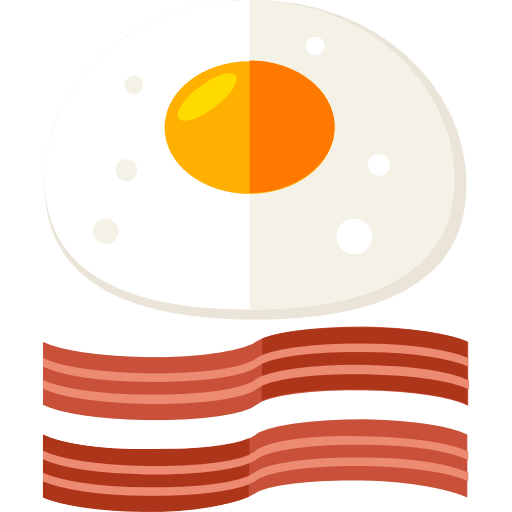
A good way to start losing weight without calorie counting or portion control is to reduce your carbohydrate intake.
Especially if attempting to follow a low-fat diet hasn’t worked for you previously.
In one study, 53 overweight or obese women were randomized to a calorie restricted low-fat group or a low-carb group for 6 months.
Those in the low-carb group lost twice as much weight (8.5 kg or 18.7 lbs) while eating unrestricted, compared to the calorie restricted low-fat group (3.9 kg – 8.6 lbs) (25).
Many other studies have also found it to be a useful way to kick start weight loss (26, 27, 28).
Interestingly, the weight loss benefits of this eating pattern are mainly a result of eating more protein rather than cutting carbs.
In fact, carbs are no worse for your waistline than any other nutrient.
But diets high in protein reduce hunger and appetite, increase metabolism and prevent muscle loss normally associated with weight loss.
23. Find An Active Hobby You Enjoy

If you don’t enjoy the exercise you do then you won’t stick with it.
Try a range of different activities to increase the likelihood of discovering one that clicks with you.
24. Write a Shopping List Beforehand
Knowing exactly what you need will minimize the time spent grocery shopping.
The less time spent in store, the less time there is for unhealthy impulse buys.
25. Don’t Go Grocery Shopping While Hungry
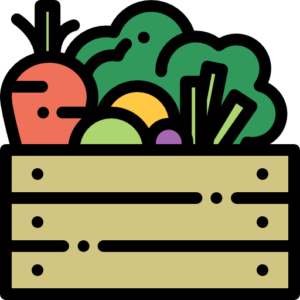
It’s no secret that if you’re very hungry at a restaurant you’ll likely order more food.
Likewise if you do the grocery shopping on an empty stomach you’re likely to purchase more unhealthy and high-calorie foods.
This is a natural trait of how the human brain responds to food cues, so don’t give it a chance to shine.
26. Eat More Protein at Breakfast
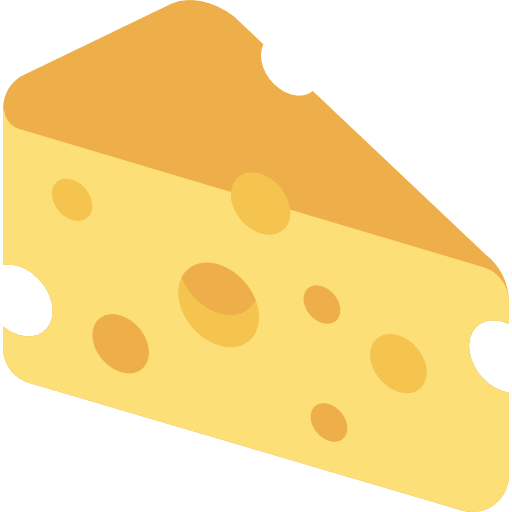
If you do eat breakfast, you’re better of choosing a high protein dish rather than a carb-based breakfast like bagels or cereal.
Two separate studies have shown that eating eggs in the morning compared to bagels can help you lose fat without trying, which kind of ties in with the other point about increasing protein consumption (29, 30).
Greek yogurt, cottage cheese and peanut butter (90%+ peanuts) are some other options to increase your breakfast protein.
27. Keep a Bottle of Water Handy

Keeping some water within arm’s reach is a good idea.
This is because drinking more water appears to be an effective way to reduce calorie intake.
In a study of 24 overweight or obese older adults, drinking 16.9 ounces (0.5 liters) of water before breakfast decreased the number of calories consumed in the meal by 13% (31).
Increased water intake also appears to slightly increase your metabolism and the amount of calories you burn at rest for 30-40 minutes (32, 33, 34).
28. Try Intermittent Fasting
Intermittent fasting (IF) refers to an eating pattern that involves regular short-term fasts.
The most popular types of intermittent fasting are:
- The 5:2 Diet: Eat normally for five days, and only 500-600 calories on two days per week.
- The 16/8 Method: Skip breakfast each morning and only eat during an 8-hour period, such as from 1 pm to 9 pm. Remain fasted for 16 hours per day.
- Eat-Stop-Eat: One or two 24-hour fasts each week. For example not eating from dinner on Thursday until dinner on Friday.
The main reason it can help you lose weight is pretty straight forward. Skipping meals during the fasting periods means you eat less food and therefore fewer calories overall.
This review found the average weight loss of intermittent fasters was 2.6% after month one, and 8.9% after 6 months. There were also clear improvements in blood pressure and insulin levels (35).
Other more recent reviews found intermittent fasting leads to an average weight loss of 1.7-7 lbs (0.8-3.2 kg) per month, on par with long-term calorie restriction (36, 37).
Intermittent fasting is an effective strategy to lose weight, but it’s certainly not the only way. Any eating pattern that helps you consistently reduce your calorie intake will work.
29. Don’t Drink Your Calories
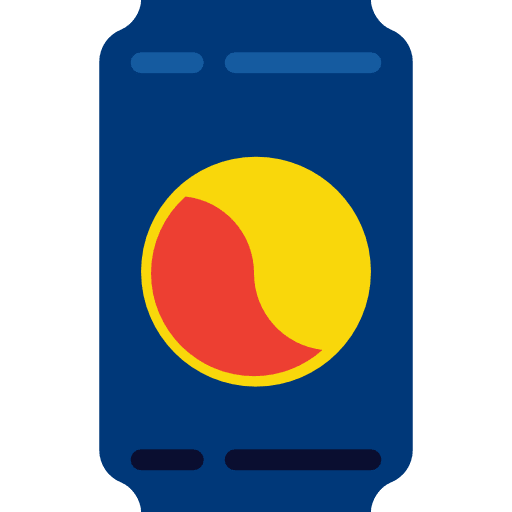
Sugary beverages like soft drink (soda), fruit juice and sports drinks may be the single most fattening aspect of the modern diet.
Even though they contain lots of calories, your brain doesn’t register them like solid food.
That means the calories from sugary beverages don’t make you feel full, and so you won’t eat less food to compensate. Instead, you end up adding these calories on top of your normal intake
It’s no surprise then that sugary beverages are linked to a 60% increased risk of obesity in children, for each daily serving (38).
If you are serious about losing weight, consider giving up sugary drinks completely.
30. Choose ‘No Added Sugar’ Products
Foods high in added sugar provide a lot of extra calories, but they are not nutritious nor very filling.
Choose products labelled as ‘no added sugar’ where possible to limit the amount of unnecessary calories you consume. But even then, that label it is not a guarantee the product is low in sugar or calories.
You should also be careful when choosing “low-fat” or “fat-free” foods. Manufacturers usually add lots of sugar to compensate for the flavor lost when the fat was removed.
31. Cook One Meal A Day (Eat at Home)

Fast food and restaurant meals contain loads more calories than home-cooked meals, on average.
Unfortunately, people eat out more than ever; a habit that’s become a major driver of our expanding waistlines.
This graph by Dr. Stephan Guyenet illustrates how much our eating habits have changed in the past century. The amount of food eaten at home (shown in green) has declined from over 90% to around 50% in 2009.
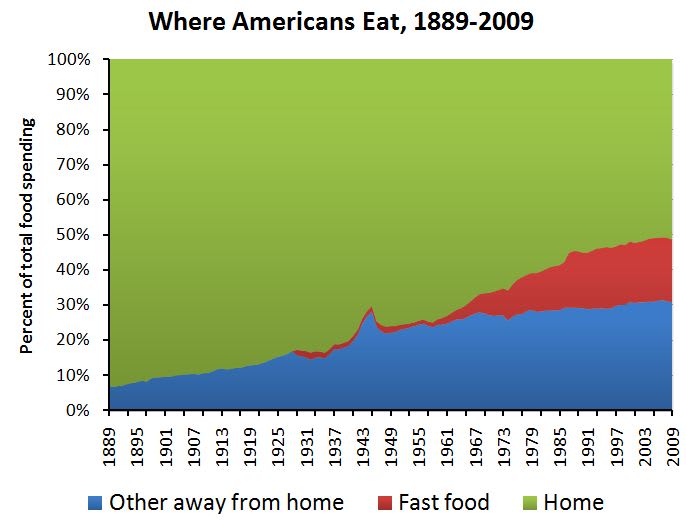
Cooking meals yourself is almost always healthier, so plan to eat at least one home-cooked meal per day, preferably three.
32. Batch Prepare Meals For The Week
Just about everybody knows how to eat healthy.
What often separates those who do and don’t is planning ahead.
Instead of trying to figure out what to eat for lunch at lunch time, prepare a batch of healthy meals you can bring with you each day.
For example, make a big batch of pumpkin and carrot risotto that you portion into containers and store in the fridge. Now you can grab one each morning before you go out.
The same can be done with dinners and refrigerating or freezing portions for another time.
This will save you loads of time and loads of calories.
33. Chew Gum Between Meals If You Feel Hungry

This will keep your brain and tastebuds occupied without actually consuming any calories.
Make sure your gum is sugar-free though so it doesn’t damage your teeth.
34. Shop Along The Edges First
Supermarkets and grocery stores are literally designed to make you stay longer and spend more.
That means they will ultimately guide you to the aisles where their most profitable products exist… junk food.
Instead, you should shop along the edges of the store first where food tends to be less processed. Only head into the aisles you need after you’re done.
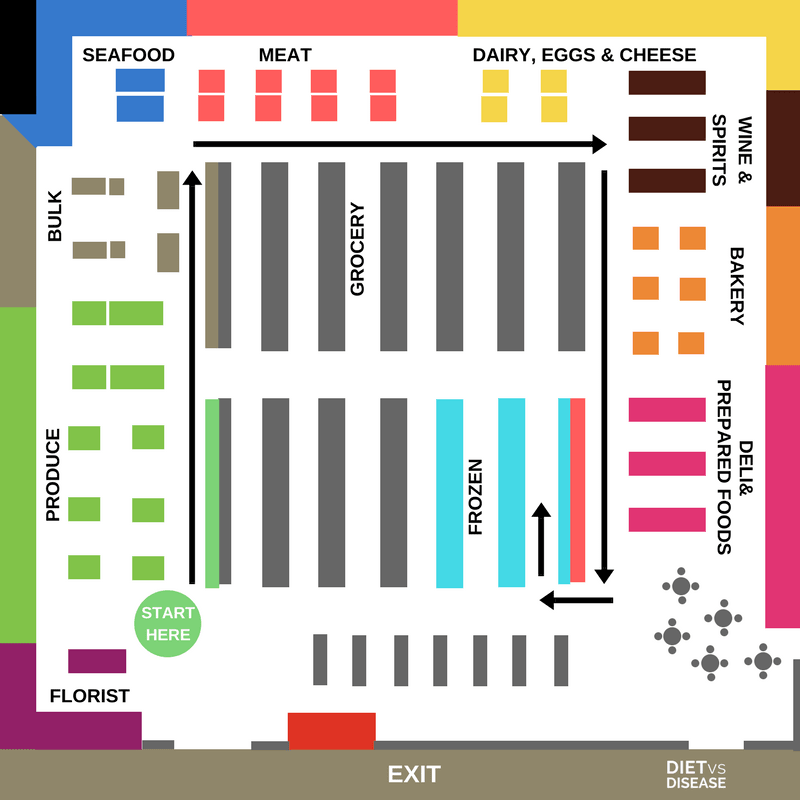
This ensures you fill your basket with more healthy foods and leaves little room for junk food and impulse buys.
35. Use the Stairs Instead of the Elevator

Not every can find (or make) time to exercise for an hour each day.
That’s why incorporating physical activity into your everyday life is so important.
Those working in an office block can simply do this by using the stairs instead of the elevator. For example, if you are on the 30th floor, use the elevator each morning and evening for the first 25 floors and walk the remainder.
I’ll never forget this saying I learned while studying, “Think of exercise as an opportunity, not an inconvenience.”
36. Walk or Ride Instead of Drive
Following on from the point above, there are many ways to do more activity without going out of your way.
Even if you drive long distances to work, start to park further from the entrance so that you must walk a short distance extra.
Every little bit adds up in the long run.
37. Eat More Fish

Fish is good for you and your waistline.
It’s one of the few things that everyone in nutrition agrees upon.
Fish is high in protein to keep you full, and many varieties are full of healthy omega-3 fatty acids that have a range of benefits.
This is why the World Health Organization (WHO) recommends eating 1–2 servings of fish per week, preferably from sustainable fishing methods.
38. Stand Up At Work
Sitting at your desk all day uses hardly any calories.
Unsurprisingly, it’s linked to weight gain and an increased risk of type 2 diabetes and heart disease (39, 40, 41).
One study compared an afternoon of sitting at work vs an equal amount of standing and found that standing burned an additional 170 calories (42).
Put another way, standing at your desk each afternoon will burn between 500-1000 extra calories per week.
39. Only Drink Alcohol On Special Occasions

I have some good news.
Drinking alcohol in moderation seems to be fine and is not consistently linked to weight gain (43, 44).
Heavy drinking, on the other hand, is strongly linked with weight gain. And it make sense when you consider all the additional calories in a drink.
The type of alcohol also matters. Beer appears to cause weight gain, while drinking wine in moderation may actually be beneficial.
The key word here is moderation, meaning only a wine on some nights in the week, and never binge drinking.
If you can’t say you drink in moderation and keep a straight face, then you need to cut back if you want to lose weight.
40. Don’t Eat Red Meat Everyday
I love steak and Bolognese too.
But its combination of fat and protein makes red meat quite calorie dense compared to non-meat alternatives. Even lean varieties.
For example, a 200 gram serving of lean beef sirloin steak is about 366 calories and 12 grams of fat. A 200 gram serving of firm tofu is only about 140 calories and 8 grams of fat (45).
And a 200 gram grilled portabella mushroom (a common vegetarian alternative to steak) is only 58 calories and 1 gram of fat.
Pan-frying meat will also significantly increase the calories because of the oil, so be mindful of how you cook it as well.
For this reason I don’t recommend eating red meat more than twice per week, especially if you want to lose weight.
41. Cook With More Vegetables

Vegetables are typically very low in calories and very high in fiber.
Soluble fiber in particular slows absorption of nutrients and makes you feel even more full.
In fact, several studies show that increasing soluble fiber consumption causes weight loss by automatically cutting your calorie intake (46, 47).
The more tasty veggies add to your meals, the better it is for your waistline.
42. Swap Full Sugar For Diet Beverages
Sugary beverages like soft drink and juice are packed with unnecessary calories.
Swap them for diet (artificially-sweetened) alternatives if you want to lose weight.
Drinking one can of pepsi max instead of regular pepsi will save you 100 calories (48).
43. Swap Diet Beverages For Water
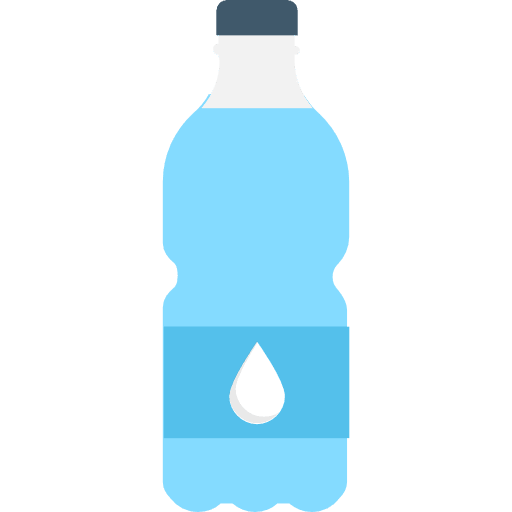
Go one better and swap diet (artificially-sweetened) beverages for water.
Even though diet drinks are calorie-free, researchers don’t yet understand the overall impact they have on bodyweight and health.
Many speculate that long-term intake of artificially-sweetened foods could create a scenario where the brain no longer connects sweet foods with an influx of energy (49, 50).
So when you do actually eat a sugary and calorie-dense food, your brain may not register it. This compromises your body’s innate ability to control food intake.
Additionally, regular consumption of artificial sweeteners is consistently associated with greater risk of type 2 diabetes, high blood pressure and even obesity (51, 52, 53).
Losing weight is one thing, being healthy is another. Diet drinks might not be as healthy as we hoped.
44. Keep Snacks and Junk Food Out of Sight
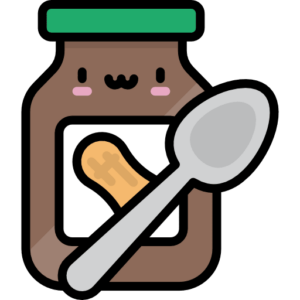
Willpower is finite.
That means each day it can (and does) run out. Keeping junk food in your line of sight relentlessly drains will power.
If there are cookies on your desk in eyeshot, you will eventually eat them, even if you didn’t intend to.
The solution is quite obvious; don’t keep junk food in eyesight of your living room or office space. But that rule can be even more useful in the kitchen.
For example, in your fridge move vegetables and fruits to the shelf at eye level, and put junk foods and treats in the vegetable crispers.
Don’t remind yourself that there is chocolate in the fridge or cookies in the pantry.
“Out of sight, out of mind.”
45. Halve Your Restaurant Meal

Restaurant portions are massive, especially in the US.
Instead of forcing down the whole meal, ask the server to only bring out half the meal and put the other half in a doggy bag.
Make sure you do this before your meal is served so you don’t even have the option to eat more.
Eat the leftovers another night, and you’ve just saved yourself 50% of the calories and some extra cash.
46. Eat Slower and Enjoy Your Food
This sounds like common sense but few people do it.
In fact, eating slowly and appreciating your food even has a name- mindful eating.
Mindful eating is a form of mindfulness meditation and can reduce stress-related overeating and improve our response to satiety signals (54, 55).
Mindfulness is safe and there are many free resources online to help you learn at home.
47. Take a Break Before You Go For Seconds
Your body doesn’t just tell you when it’s hungry, but also when it’s full.
However, there is a delay between when you start eating and when you start to feel full.
This is because the digestive process needs 20-30 minutes before feedback signals travel up to the brain (56, 57).
Instead of rushing from the table to get a second round on your plate, do something else first like have a chat or make a hot beverage.
48. Have a Tea or Coffee After Dinner If You’re Still Hungry

The fullness signals from the stomach to the brain are not immediate.
To give them a chance, have a tea or coffee right after dinner if you are still hungry.
This usually buys your body enough time to register that you’ve eaten a meal and are no longer hungry.
49. Measure Your Portions
Try to measure your portion sizes if you’ve been struggling to lose weight.
It doesn’t have to be forever, just a few days to give you a base understanding of how much you eat. This is really important for weight management (58).
You may be surprised at how dramatically you underestimate your calorie intake.
Use your hand as a guide if you’re eating a food without a label.
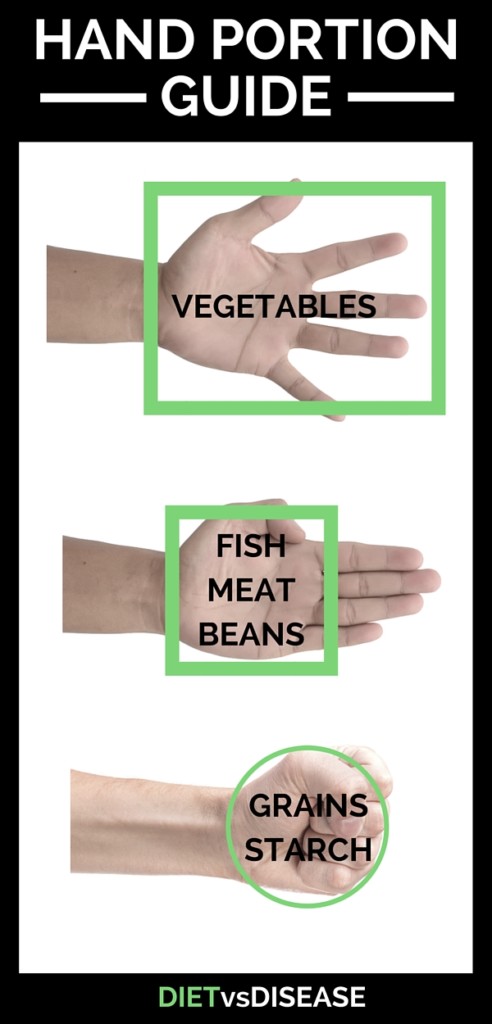
Generally speaking, your meal’s protein portion should be the size of your palm, and vegetables/salad the size of your hand. This leaves about 1/4 or less of your plate for carbs such as pasta, rice or potato.
Packaged foods typically show a suggested serving size on the nutrition label. You can also measure using a food scale or measuring cups or spoons.
50. Watch Less Television

Are you eating each night that you watch television?
Chances are you do, and it’s not dinner either.
Research shows that both children and adults who watch more television are more likely to be overweight, especially if we find the shows quite boring (59, 60).
You are less likely to eat if you keep your hands and brain occupied, such as reading a book, playing a board game with your family or even typing on the computer.
51. Don’t Eat Meat At Breakfast
Gram for gram, meat is higher in calories than unrefined plant-based foods like cereal and grains.
It makes sense then not to eat meat at breakfast, especially if you are going to eat it another time in the day.
Additionally, meat we eat at breakfast tends to be processed and high in calories such as sausages and bacon.
So unless you’re eating baked salmon or grilled chicken breast, don’t eat meat at breakfast.
52. Go To Bed Earlier

Sleep quality is incredibly important for the optimal function of your body and hormones… yet it’s rarely spoken of.
Inadequate sleep is actually one of the strongest risk factors for obesity.
In one study, short sleep duration was found to raise obesity risk by 89% in children and 55% in adults, which is worrying (61).
Poor sleep also increases hunger and cravings and causes a tendency for weight gain by disrupting hunger hormones.
Lastly, going to sleep earlier also eliminates much of the snacking time from your day (as most people snack after dinner).
53. Brush Your Teeth After Dinner
Brushing your teeth is tedious.
Nobody eats after they do it because nobody wants to brush them again.
Many people who do brush immediately after dinner find it suppresses any compelling food cravings, like a ‘psychological switch’.
54. Ditch Your Vitamin Water

Vitamin Water is a beverage that is aggressively marketed as healthy.
However, it’s actually loaded with sugar.
One 20 oz (591 ml) bottle of Vitaminwater contains about 120 calories and 32 grams of sugar, which is about 6 teaspoons.
What’s more, the vitamins typically added to these drinks (Vitamins B and C) are very rarely lacking in the average person’s diet (62, 63).
Consuming these vitamins in excess amounts provides no health benefits whatsoever. They cannot be stored by the body, and are simply lost through urine.
It makes zero sense to drink a sugary, calorie-dense water in order to get some vitamins your body doesn’t need.
55. Meet Friends For A Walk Instead of Just Brunch
Instead of catching up with old friends or colleagues for a meal, meet for a walk instead.
It’s a simple swap to add more exercise into your day without going out of your way to do so.
56. Follow A Ketogenic Diet
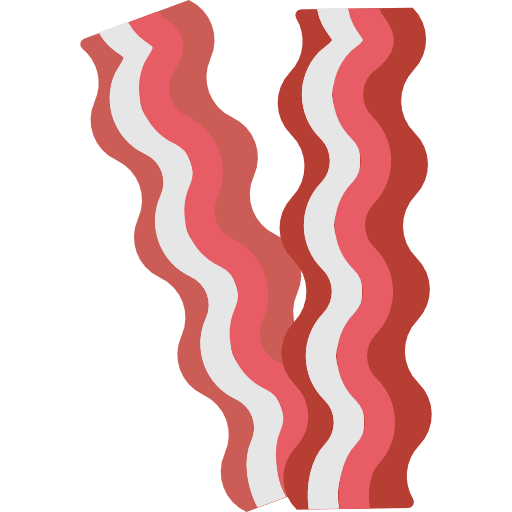
The ketogenic diet is a high-fat eating pattern that only allows about 25 grams of carbs per day.
The equivalent of one piece of fruit or one large slice of bread. Doing so strictly rules out the majority of junk foods… but many healthy foods too unfortunately.
Unsurprisingly, the ketogenic diet is difficult to tolerate and the drop-out rate is enormous (64).
Very few people can stick with it long-term, and the best diet is the one you can stick to for life.
Therefore I don’t recommend it as a first choice.
57. Bring Lunch to Work
Packed lunches from home will almost always be healthier and lower in calories than a takeaway option.
Plan your week and batch prepare some lunches ahead of time.
58. Make Weight Training a Priority

One of the best things you can start when trying to lose fat is resistance training.
This refers to strength training like lifting weights or body weight exercises such as planking.
Resistance training helps retain muscle mass, which often gets burned alongside body fat if you are losing weight and not exercising (64, 65).
The more muscle you retain, the faster your metabolism and the more calories you burn at rest.
59. Keep Up The Cardio Too
Cardio exercise like jogging, cycling and swimming has recently got a bad reputation for some reason.
However, alongside weight training it’s one of the most important habits for improving your health and fat loss.
It’s also important for burning belly fat, the dangerous “visceral” fat that can surround your vital organs and cause disease.
60. Eat More Soup
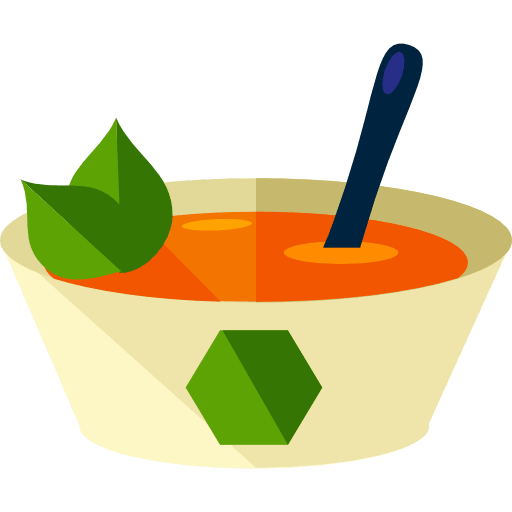
Choosing foods with a low energy density will generally help you eat fewer calories overall.
The easiest way to do this is to just add water to your food… by making a soup.
Some studies found that eating the exact same food in the form of soup rather than solid food makes people feel more full and eat significantly fewer calories (66, 67).
Additionally, eating a water-based soup as a ‘preload’ or first course to main meals appears to reduce total calorie intake at that meal, as well as the amount of calories consumed at meals later in the day (68, 69).
Soup’s on!
61. Count Your Calories For A Few Days
Self-awareness is fundamental to successful weight loss.
Yet many people actually have no idea how many calories they eat in a day.
Research shows that keeping track of your diet will help you lose weight. Those who use food diaries or apps that help to count calories consistently lose more weight than those who don’t (70, 71).
I’m not saying you should count calories and weigh everything for the rest of your life. Just do it for a couple of days every few months to make sure your on track.
62. Don’t Drink Fruit Juice
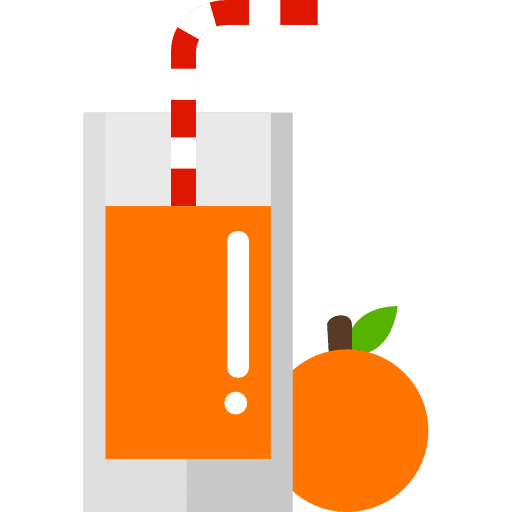
Most fruit juices at the supermarket have very little in common with whole fruit.
They are typically brimming with sugar from juice concentrate. In fact, they can contain just as much sugar and calories as soda, if not more (72).
Additionally, fruit juice usually has no fiber and doesn’t require any chewing like you would a whole fruit.
For example, a glass of orange juice won’t be nearly as fulfilling as a whole orange. It’s easy to drink eight oranges, but difficult to eat eight oranges.
Stay away from fruit juice and eat whole fruit instead.
63. Remember That Hunger Subsides
The feeling of thirst is unpleasant, and it remains until you take a drink.
However, hunger is temporary. If you wait long enough it subsides.
Keep this in mind the next time you feel hungry outside of main meal times.
What will happen if you just wait?
64. Don’t Eat French Fries or Potato Chips (Crisps)
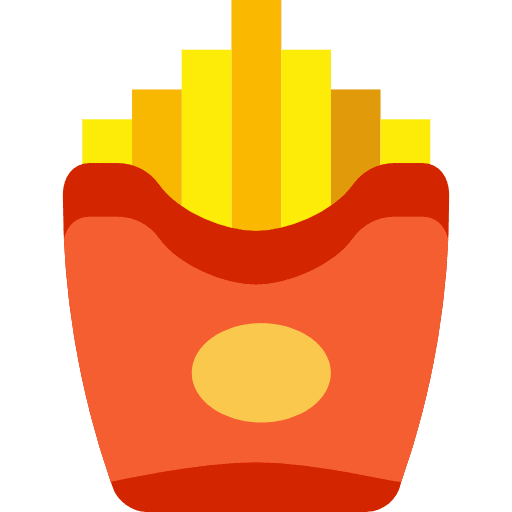
Whole potatoes are healthy and filling, French fries and potato chips are not.
They are full of oil (and extra calories), stripped of fiber, and it’s easy to eat way too many of them.
In observational studies, regularly consuming French fries and potato chips has been strongly linked to weight gain. In fact, one study found that potato chips contribute to more weight gain per serving than any other food (73)
Think about how many times you might eat processed potatoes in a month- can you reduce it?
65. Don’t Weigh Yourself Everyday

It’s common to feel like you’re hardly losing any weight, despite religiously sticking to your diet.
The bathroom scale usually fuels this idea.. But remember that your goal is actually fat loss, not weight loss.
Weight is affected by several factors and can fluctuate a lot depending on how much food and liquid you’ve had.
Changes in estrogen and other hormonal levels can also cause water retention in women, which shows on the scales (74).
Additionally, if you’ve been working out then you may be gaining muscle as you lose fat, which the scale cannot represent.
For these reasons you should measure progress with a tape measure instead, and only weigh yourself every two to four weeks.
66. Keep Healthy Food Handy For a Snack

Keeping healthy options close by can help prevent you from choosing an unhealthy treat if (when) food cravings occur.
A few snacks that are simple to prepare and easily portable include:
- a hardboiled egg (or two)
- whole fruits
- a handful of nuts
- carrots and hummus dip
- Greek yogurt.
Preparation is critical when it comes to weight loss.
67. Eat Oats Instead of Cereal

Oats are incredibly nutrient and fiber dense, particularly in a fiber called beta-glucan.
Research shows that the beta-glucan delays the time it takes your stomach to empty of food, which may directly increase your feeling of fullness (75).
It may also promote the release of a satiety hormone in the gut in response to eating, which could help you eat fewer calories and lose weight (76, 77).
Oats also appear effective at reducing both total and LDL cholesterol levels, as well as preventing cholesterol oxidation, a major risk factor for heart disease (78, 79, 80).
All things considered, they’re one of the healthiest and least expensive foods available.
So if you absolutely must have your carbs in the morning, you know what the best choice is.
68. Choose High Protein Snacks
Protein is the single most important nutrient for losing weight.
Research shows that when people increase their protein consumption, they automatically start eating fewer calories (81, 82).
So if you’re going to have a snack, go for a high protein choice.
Increased protein also helps prevent weight regain. In one study, a small increase in protein intake (from 15 to 18% of calories) halved the amount of weight regained after weight loss (83).
Some high protein snack options to consider include boiled eggs, hummus and carrot sticks, cottage cheese, Greek yogurt or a handful of nuts.
69. Choose Whole Fruits as a Snack

Diets high in fruit are linked with a range of health benefits, including a lower risk of many diseases (84, 85).
The general recommendation for fruit intake is at least 400 grams per day, or five servings of 80 grams. This is equal to a small piece about the size of a tennis ball or about 1 cup for fruits measured by the cup.
Considering fewer than 1 in 10 Americans meet that minimum recommendation, it makes sense that we should eat more whole fruit when we can.
70. Plate Food in the Kitchen, Not at the Table
Even if you’re full after a meal, you’ll serve yourself another round if it’s all there at the table in front of you.
However, if food is plated in the kitchen beforehand, you’d have to get up and walk to the kitchen and then walk back to eat another round.
This extra effort will often times stop you from eating a second round that you didn’t really want anyway.
Make laziness work for you, not against you.
71. Adopt New Strategies To Deal With Stress

Long-term stress can cause food cravings and affect eating behaviors.
In fact, women feeling stressed were shown to experience greater cravings and eat markedly more calories than non-stressed women (86).
Stress also increases cortisol levels in the blood, a hormone closely linked with weight gain around the belly. It may influence your gut bacteria too (87, 88).
Reducing stress is not easy though, and there are many different ways to go about it. Increasing your physical activity levels is a proven method, as is practicing mindfulness meditation.
72. Track Your Movement
Most health organizations recommend walking at least 10,000 steps on most days of the week.
Research shows the average American employee walks about 6,800 steps per day at best (89).
Realistically it’s difficult for desk-jockey to reach this 10k target, but it’s alarming just how few daily steps most of us take.
Tracking your movement with a wearable fitness device such as a pedometer, Fitbit or even your phone can be really eye-opening. In fact many discover it’s an effective motivational tool to be more active (90).
73. Steam, Bake or Roast Instead of Frying
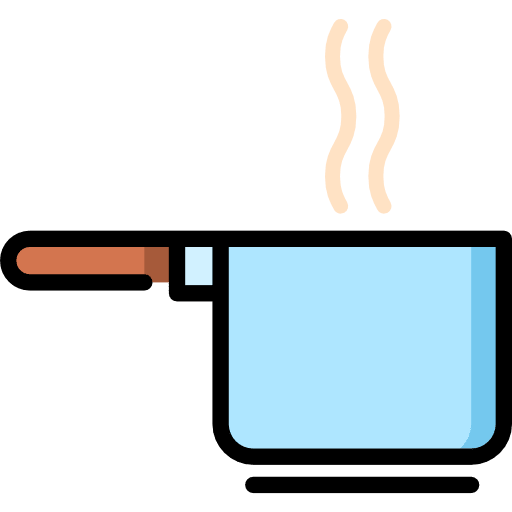
Frying food adds a lot of unnecessary calories to your meal.
For example, a 4-ounce roast chicken breast (skin on) contains 223 calories. However, a 4-ounce fried chicken breast (skin on) contains 294 calories.
That’s an additional 71 calories or 32% for the same food, which definitely adds up over time.
74. Try High Intensity Interval Training (HIIT)
If you want to lose weight quickly, but don’t have much free time yourself, HIIT is a great choice.
As the name suggests it’s a high intensity workout that can be done in as little as 10-15 minutes.
It can also be done at home with no equipment and for free if you use an app such as Freeletics.com.
I recommend you start with this 8-minute workout.
75. Use Smaller Plates
The way our brain controls eating behavior is very complex.
However, using small plates at meals is a simple way to “trick” your brain into thinking more food was eaten.
Psychologists have been closely studying this phenomenon, known as the Delboeuf illusion, and it really helps those hoping to lose weight.
For example, which of the plates below looks “fuller” to you?
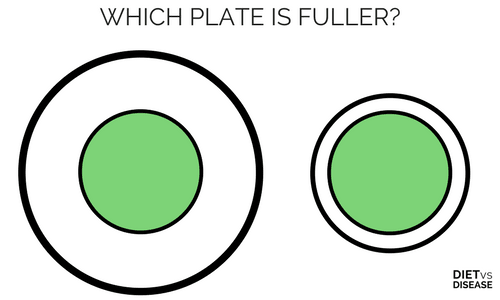
Of course it’s the one on the right. However, both dishes actually contain exactly the same amount.
76. Don’t Be So Hard on Yourself
A healthy and positive mindset is a powerful ally when it comes to weight loss.
If you “slip up” and eat something that doesn’t align with your health goals, or have a few drinks to celebrate a special occasion, it’s perfectly okay.
Sometimes life can get in the way… and we are only human after all.
Weight loss is a long game and you shouldn’t worry yourself over those rare occasions. If you are consistently making the right choice in the big picture, you will see results.
77. Don’t “Diet”, Eat Healthy Instead
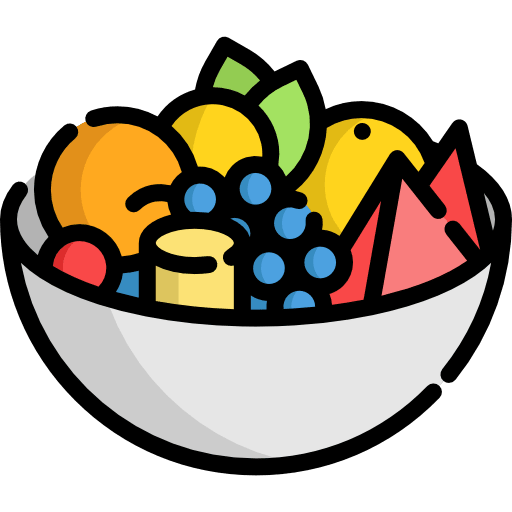
The big issue with fad “diets” is that they never work in the long run.
If fact, people who “diet” tend to gain more weight over time, and studies show that dieting is a consistent predictor of future weight gain (91).
Instead of going on a diet, make it your goal to become a healthier and happier person. Focus on nourishing your body, instead of starving it.
Weight loss will follow as a natural side effect.
